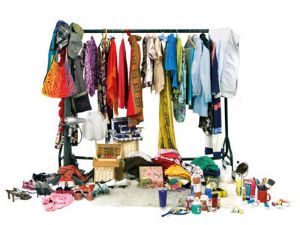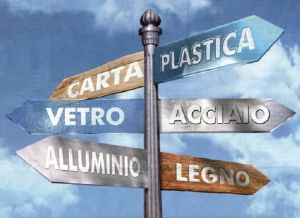IIm exhausted and confused. IIve spent a week cycling round Florence (this article has a minimal carbon footprint) in a quest to find the cityys most eco-friendly vegetables. I chose to make an example of the humble courgette, comparing the cost of organic and non-organic varieties. After all, few people are willing to buy organic if the prices are up through the hole in the ozone layer. I also investigated the number of food-miless each courgette had accumulated: how far it was transported before arriving in Florence. Transportation affects not only freshness, and therefore how quickly ittll go soggy in the back of your fridge, but also contributes to scary CO2 emissions. And by the way, donnt worry if youure not sure what a courgette; is, from now on I will be gritting my British teeth and calling it a zucchinii.
Gathering the information necessary to make an informed choice about what I eat soon turned into an odyssey. Not only did I go to Conad, Standa, Esselunga, Coop and NaturaSi supermar-kets and to SanttAmbrogio and San Lorenzo markets, but I often had to go to two or three different branches of the same supermarket to find organic zucchinis, which would be hidden away in flimsy cardboard trays. Market stall owners eyed me with suspicion as I scribbled prices and supermarket workers looked blank-faced as I asked them where the zucchinis were from. The final results were bewildering. Having lost several mornings and twice as many kilos cycling around, the temptation to give up trying to do the right thing was pretty strong.
Prices and quality varied wildly from 5,00 a kilo for local non-organic zucchinis with flowers at SanttAmbrogio, to 1,98 a kilo for the same (but not as fresh or local) from Coop. The good news is that all the zucchinis available were grown in Italy. We can thank our lucky stars to be in the home of Slow Food, where home-grown, seasonal products are valued so highly. However, most zucchinis were from Lazio or further afield. NaturaSi supermarket is great for organic produce but is quite expensive and transports its zucchinis from Sicily. The winner for low food-miles and organic agriculture goes to the Azienda Meo Maria in SanttAmbrogio, which sell its own zucchinis with flowers at 3,80 a kilo. The only organic zucchinis with flowers that I found, these werennt much more expensive than organic zucchinis without flowers (Standa has them at 3,70 a kilo). A look on the Internet revealed that the organic vs. low-food-miles debate is huge. There is an international locavoree movement, people who eat only whatts produced within a 100-mile radius. The most delicious-looking zucchinis I saw on my market tour were non-organic but had in fact been grown just outside Florence. They were on another stall in SanttAmbrogio and were the most expensive zucchinis in Florence that day ((5,00 a kilo).
Francesco, who runs this stall, told me to be wary of organic farmers.
>How good for the environment is an organic pineapple shipped from the other side of the planet?? he pointed out, nodding towards his organic competitor. IIm no expert, but I also donnt think therees any such thing as 100 percent organic.. Food for thought.
The other option for getting the best local produce, and to meet new people, is to join a Gruppo di Acquisto Solidale (GAS), a local co-operative of people who buy direct from farmers and distribute produce themselves. GAS tend to be a bit political and are often run from leftist social clubs, although nobody asks you to declare your political colours before letting you order your box of mixed veg. The GAS I belonged to supplied everything, including pasta, milk, vegetables and soappall rigorously organic and local. The vegetable box would be bursting with reassuringly dirty and delicious fresh produce. My GAS wasnnt built for passive membership though. A rumour went round that some members werennt pulling their weight and so, with little free time and no car to help pick up produce, I snuck out of the group, tail between legs. To find the nearest GAS and for information on how it operates or on how to set up your own, go to www.retegas.org. A website dedicated specifically to GAS groups in Florence is currently under construction.
At the end of my zucchini-quest, I chose local over organic. Buying local means youure supporting the local economy and might come face to face with the person who grew your dinner. Ask around at your local market to find out which days farmers set up their stalls. The main thing is to be able to make an educated choice, and this, as I found out, is not easy. Why bother spending all that time looking for the most eco-friendly vegetables? The fact is that weere willing to spend hours finding out about whatts happening in the news or what our friends are doing on Facebook, so why shouldnnt we be prepared to spend a bit of time finding out about what we eat? (Did you know, for example, that zucchinis have been eaten in South America for thousands of years but have graced the tables of much of Europe and North America for less than a century?) Eating is one of the most fundamental aspects of our lives. Of course we should be interested in what we put in our mouths.
One final solution is to grow your own. Sadly, one of my zucchini plants was eaten by slugs and the other one is only 10cm tall now, so ittll be a while before it bears fruit. IIve solved the slug problem by sinking a glass of beer into the ground near the zucchini plants. Despite being horrified by this use of perfectly good beer, my other half runs down the garden every morning to count the number of slugs that have crawled in and died in a drunken stupor each night (a lot: slugs are real alcoholics). The only problem with my plant is that the zucchini seeds I used were flown over from the UK in my mother-in-lawws suitcase, so they accumulated over 750 food-miles before they even germinated. IIm sure though, that these zucchinis will be the most delicious of all.
NB: No zucchinis were harmed in the writing of this article, but remember that if you do want to harm some, they can be fried, grilled, made into pasta sauce or risotto, roasted, stuffed (the plant and the flowers) and barbequed.
GREEN EVENTS IN FLORENCE:
Clean-Up Day & Picnic: Cleaning up the Mugnone May 23 10:30am Piazza della Vittoria Think Globally Act Locallyythatts the slogan for the first Democrats Abroad clean- up day! Everyone is welcome to come along and join in. Donnt forget to bring gloves, sturdy shoes, some sun screen and a hat. To keep trash to a minimum, bring plastic bags from home for the rubbish, although spare bags and gloves will be provided. Contact Kimberly Virzi at kv83108@gmail.com 366 426-9859
Terra Futura
Fortezza da Basso May 29 to 31. See Top Picks
Ruotati ZEV Zero Emission Vehicles Fair
Le Cascine Park May 22 to 24. See Top Picks
Ruralia Agricultural Festival and Farmerss Market
Villa Demidoff Pratolino May 22, 23, 24. See Top Picks







